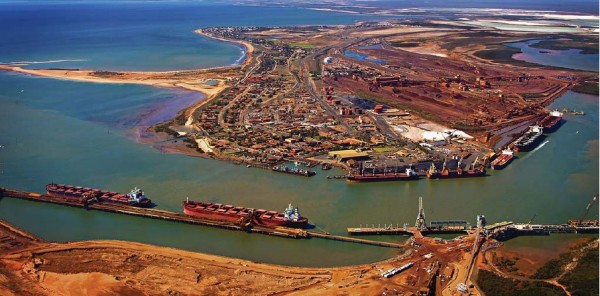
Iron ore exports at Port Hedland have increased by 30 per cent on this time last year as the big miners ramp up production.
Iron ore exports through Australia’s largest bulk commodity port totalled 36.7 million tonnes in January, up 30 per cent or 8.5 million tonnes, on the same month in 2014, figures from the Pilbara Ports Authority show.
Mining giants BHP Billiton, Rio Tinto and Fortescue Metals Group are continuing to export high volumes of the steel-making ingredient from Port Hedland and Dampier despite falling prices and a slowing Chinese economy.
Iron ore is trading around $US62 per tonne amid an oversupply of the commodity.
Pilbara Ports data shows a total monthly throughput of 50.1 million tonnes for both Port Hedland and Dampier Port in January, or a 19.6 per cent increase on January 2014 figures.
Throughput at Dampier decreased two per cent to 12.8 million tonnes during the same period.
But on a monthly basis exports at Port Hedland fell 1.3 per cent in January compared to December, with a cyclone warning causing both Port Hedland and Dampier ports to close on January 20.
Fat Prophets resources analyst David Lennox said compared to previous years there had been very little cyclone activity in the Pilbara.
“The figures indicate that there’s still momentum in the volumes of iron ore going out of this country and this just confirms it,” Mr Lennox said.
“Whether or not it’s a seasonal factor through a lack of cyclones, we really can’t tell until we see the Chinese trade numbers next week.”
BHP Billiton, Rio and Fortescue all announced production increases in their quarterly production reports in January.
BHP said its Western Australia iron ore production increased by 15 per cent to a record 124 million tonnes, Fortescue Metals Group lifted ore production by two per cent to 43.6 million tonnes during the quarter and Rio Tinto lifted its iron ore sales by 17 per cent to a record 302.6 million tonnes in 2014.
China is expected to release trade data for January next week after the country’s manufacturing sector declined for the first time in more than two years.
Source: The Australian